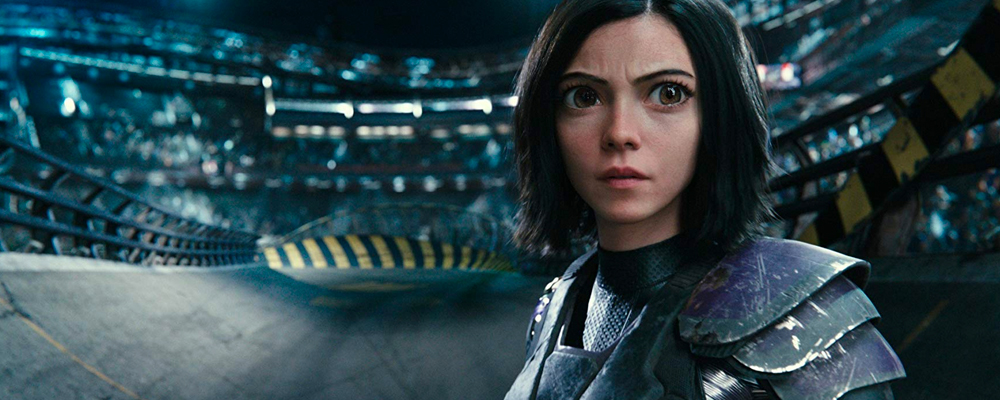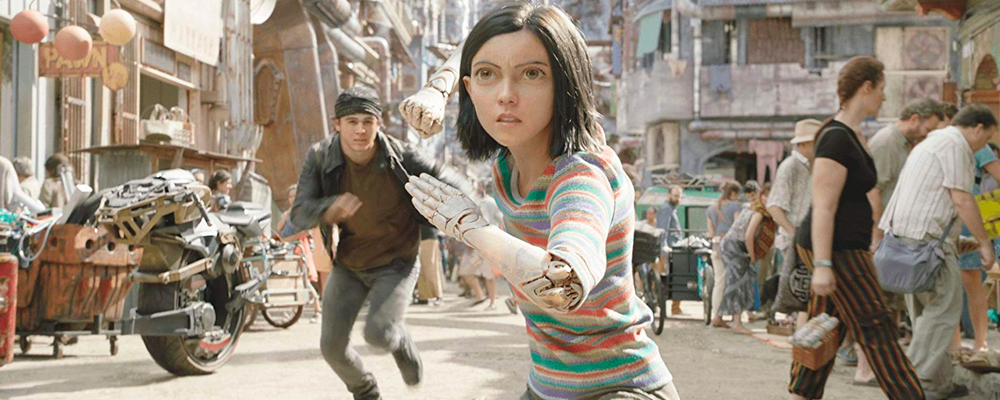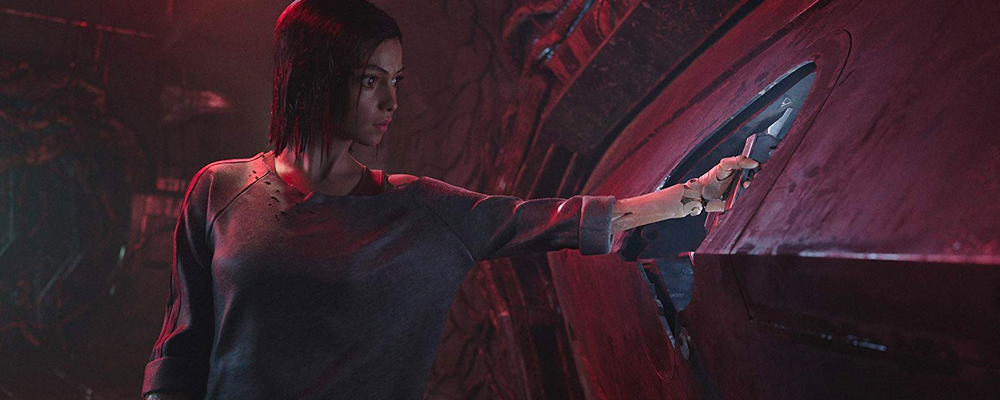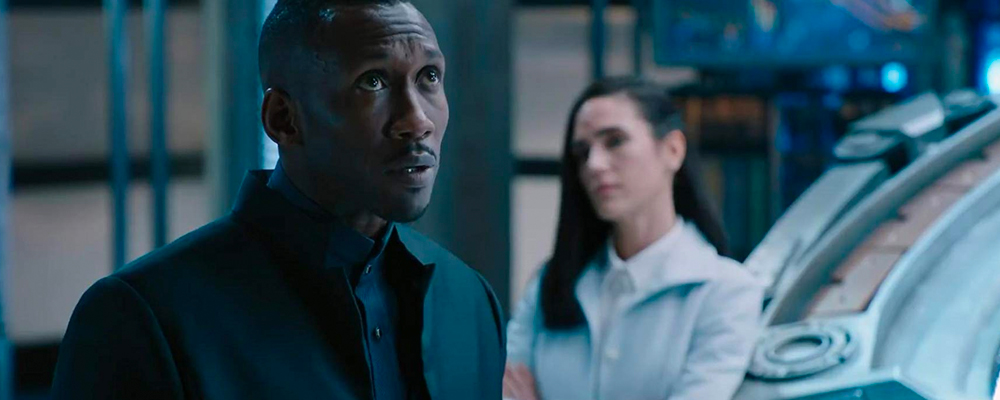‘Alita: Battle Angel’ Imagines a Junkyard Future of Cyborgs and Kingpins
Alci Rengifo
“Alita: Battle Angel” confirms that we’ve reached a point in movies where filling every inch of the screen with CGI just isn’t enough anymore. Watch this 2 hour and 22 minute robofest on an IMAX screen in 3D and there is no doubting its craft. What it should have more of is a stronger story. This opus of digital faces and glistening limbs is the latest from Robert Rodriguez, once famous for being a virtual one man film crew. He’s taking a break here from smaller affairs to work with James Cameron, who was originally attached as director, but in the end oversaw this project as producer. The styles of both filmmakers combine in what amounts to an entertainingly mess of an adventure.
Based on the manga series “Gunnm” by Yukito Kishiro, the movie is set in the distant year of 2563. By then, as is mandatory in Hollywood, the world has been reduced to a steely pile of ruin by some never explained apocalypse known as “The Fall.” Walking through piles of junk in Iron City, a doctor named Dr, Dyson Ido (Christoph Waltz) finds a cyborg female torso with an intact brain. He takes her back to his lab, gives it a new body and names her Alita (Rosa Salazar). The name is taken from Ido’s deceased daughter, for whom he had made the body before she was tragically killed. Ido’s ex-wife, Chiren (Jennifer Connelly), isn’t too happy with the idea. Alita is soon walking around Iron City and its grungy surroundings, and learns about Zalem, a sky city high above where only the wealthy and powerful reside. She soon makes friends with Hugo (Keean Johnson), who hopes to one day make it to Zalem. Hugo also introduces Alita to Motorball, a brutal competitive sport where cyborgs race and battle until someone is shredded to pieces. Then Alita makes the discovery by night that Ido hits the streets as a Hunter-Warrior, which means he’s some kind of police force fighting criminals and cyborg assassins. Alita decides to search for her real identity and memories, even finding a crashed ship that could hold secrets to who she is. But her identity is also considered highly valuable to a Zalem kingpin named Vector (Mahershala Ali), who plans to capture Alita for what she contains inside her.
This is the kind of movie where the priority seems to be in showing off its budget. “Alita” is the most expensive film yet made by Rodriguez, who became famous in the 1990s for low-budget, Tex-Mex-tinged action films like “El Mariachi,” “Desperado” and “From Dusk Till Dawn.” His best film probably remains 2005’s “Sin City,” a brilliant and trashy noir culled from the comics of Frank Miller. “Alita” has a little more in common with Rodriguez’s techy children’s films like “Spy Kids” and “Shorts,” but lacks their heart. Because Cameron (who co-wrote the script with Laeta Kalogridis) is producing and the team includes cinematographer Bill Pope (The Matrix, The Jungle Book), the film’s look is dominated by large images of junk-filled landscapes, flying cities and walking cyborgs. A lot of it looks good because a lot of money has been put into it. Alita herself is mostly CGI, done through the kind of capture technique Cameron did much better in “Avatar.” This takes away from any true effect in Rosa Salazar’s performance. Rodriguez isn’t necessarily known for the depth of his films, and since here the focus is mostly on Alita discovering she’s a fighting machine, capable of annihilating a whole bar by herself, the character is reduced to just an action toy.
We’re so used to seeing anything on the screen these days that after the cathedrals of fish in “Aquaman” the visuals in “Alita” are kind of bland, almost on par with every other futuristic junkyard vision we get in shorter action movies. Like “Jupiter Ascending” it’s a clunky epic trying to distract us with how slick it appears. Iron City is not that engaging a place, it looks like some remote depot far away from Wakanda. The most “fun” sequences involve Alita participating in the Motorball races, although this angle of the plot is woefully underused. Cyborgs race down an arena as mindless denizens cheer and scream, smashing and sabotaging each other to win. Backstage they get spruced up like race cars. This could actually have made a more interesting movie. The best visual is probably a giant pipeline that connects Iron City to Zalem, there’s genuine suspense when characters attempt to climb up the pipe and must face spinning spikes barreling down. Rodriguez can’t help himself and always throws in a wink to his southwestern roots, in this case a ruthless cyborg hunter named Zapan (Ed Skrein), has what appears to be a glistening Aztec calendar on the back of his robotic body. In geek fashion the movie throws around certain terms in that way comic books recycle ancient languages. Alita discovers she’s wired to perform a fighting style called “Panzer Kunst,” and she finds a suit that fits her belonging to a type of warrior called “Berserkers.” The armies of the future apparently have a Nordic fetish.
But the plot of “Alita” is so standard, so devoid of any real life that tension and drama are rarely generated by any of the cool special effects. The relationship between Alita and Ido never feels like it truly grows, and when Hugo starts crushing on the cyborg the film never explores if the implications. To literally shack up with a machine feels like it would inspire quite the dilemmas and questions. Unlike Steven Spielberg’s “A.I.,” there’s no effort here to explore all the challenges of this world. Jennifer Connelly’s character is never quite clear, and her relationship with Christoph Waltz is barely given any real drama. She appears, they share sad words and then it’s revealed she’s in league with Vector. Why? How? It’s just the way it goes sometimes. Maybe because we are living in an age of franchises nearly every big movie is designed like a prologue for sequels. “Alita” has an abrupt ending, with another big star revealed as a key villain, which is no doubt meant to prep us for chapter two.
So saturated are we with big movies that the saying “less is more” quickly gains new relevancy. “Alita: Battle Angel” clocks in at 2 hours and 22 minutes, yet feels devoid of story. It has a lot of big vistas, a couple of fun action scenes, but is as cold as a robot’s touch.
“Alita: Battle Angel” opens Feb. 14 in theaters nationwide.






